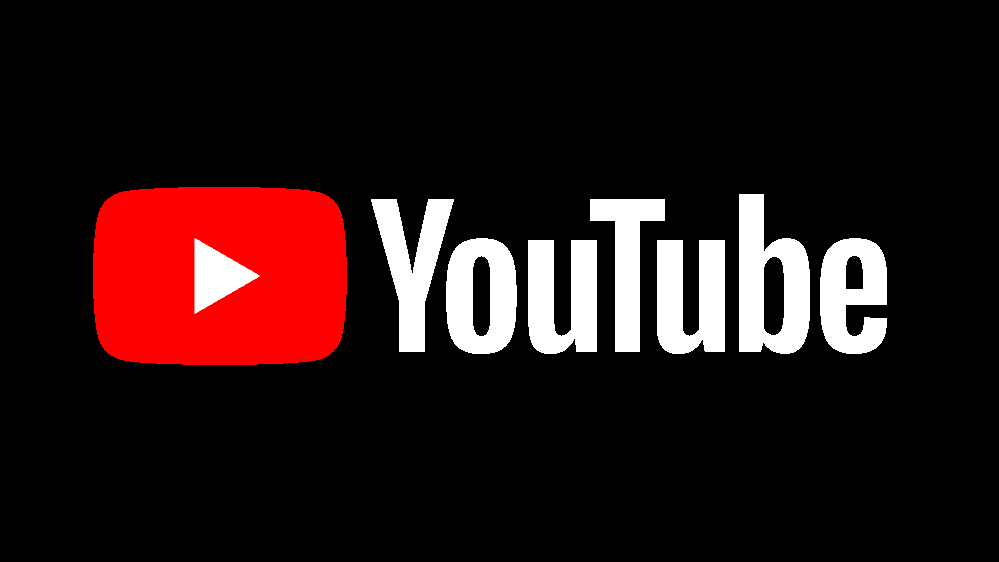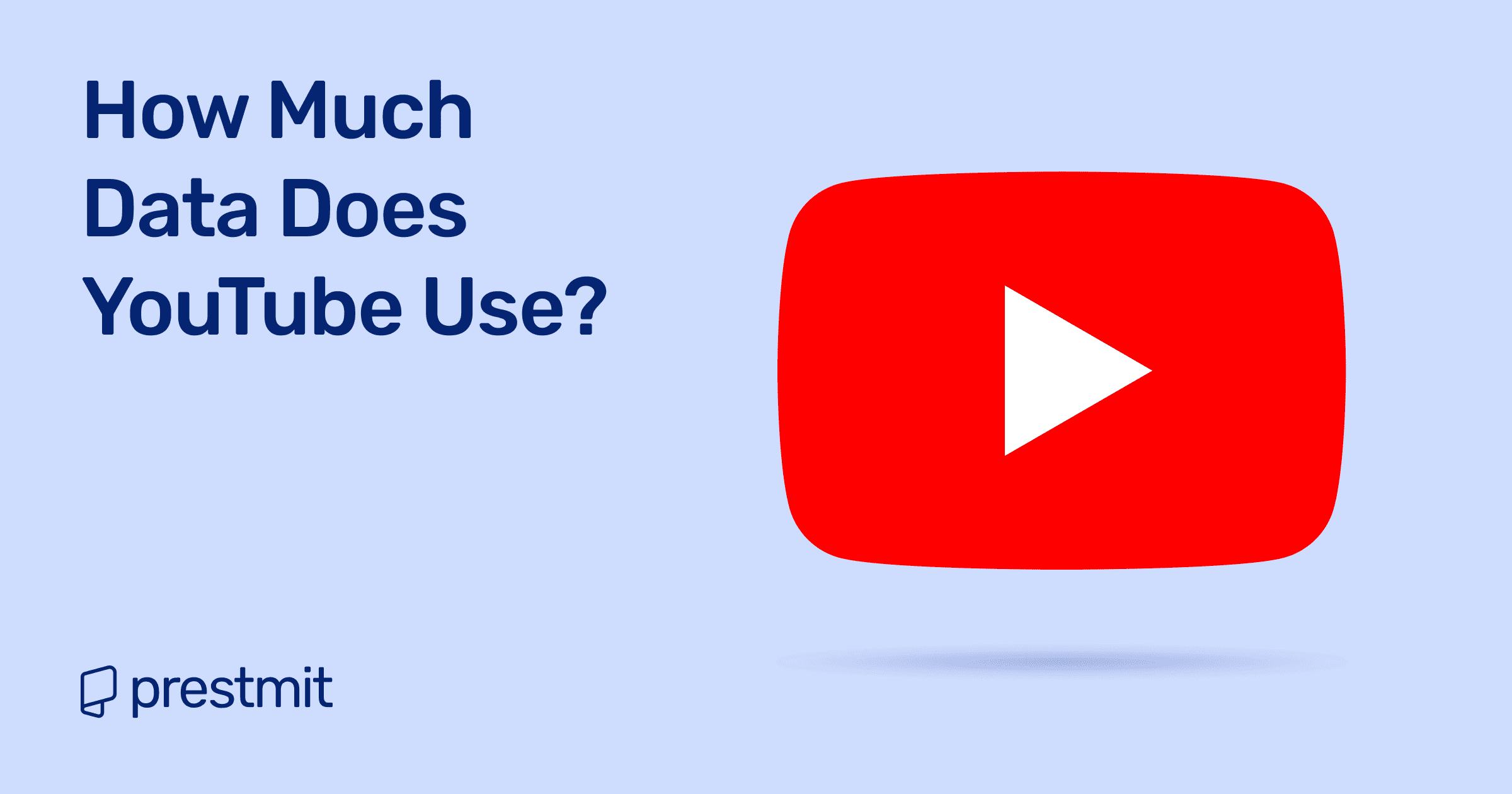Table of Contents
YouTube is unarguably the most popular video platform in the world, with more than 2.7 billion active monthly users as of January 2025. Despite the introduction of Netflix’s movie and TV show streaming service in 2007 and the rise of Amazon Prime Video, YouTube still stands out because it offers free streaming services and has a wider range of videos for users to stream.
Despite having over 2.7 billion active monthly users, YouTube has just over 100 million paid subscribers for its YouTube Premium and YouTube Music services. But like all streaming platforms, users require data to stream videos whether you are on a premium subscription or not. Since most users are not premium subscribers, it has left many people wondering if YouTube consumes considerable data.
YouTube consumes data like all other streaming platforms. However, there is no straightforward answer to whether YouTube consumes much data or not. This is because several factors determine the amount of data YouTube consumes and some of them include the video quality and the length of the video. You need to understand the amount of data YouTube consumes especially if you are a tourist using mobile internet abroad-where roaming costs and data limits may be applicable.
This article will guide you on everything you need to know about the quantity of data YouTube uses, factors that determine what quantity of data it uses, tips on how to reduce your data usage, etc. Let’s start with YouTube data usage by video quality.
What is YouTube Data Usage By Video Quality?

As mentioned in the introduction, the video quality is one of the factors that determines how much data YouTube uses. YouTube has video quality of higher resolution such as 1080p and 4K which uses more data compared to the normal video resolution quality. In addition, the frame rate also determines the amount of data that you’ll use when streaming videos on the platform.
YouTube works with different video qualities and you can choose whichever quality you want. The highest video quality is 4320p and can consume up to 375 Mbps per minute. However, the lowest video quality on YouTube is 144p and this consumes a minimal 1.5 MB per minute. Hence you must always keep in mind that your video quality determines how much data YouTube uses.
Also, remember that your video or music length affects your data consumption as well. Generally, a video of one hour duration will consume more data than a video of twenty minutes duration if they’re watched at the same quality.
How Much Data Does YouTube TV Use?
The main determinants of the quantity of data YouTube TV uses is the duration and the quality of the video being streamed. As explained above, different video resolution quality consumes different quantities of data. In addition, streaming live contents (for example a football match) can consume more data especially if streamed for a long time. Below is an estimation of the data that each video quality resolution on YouTube consumes:
| Resolution | Data Usage (Per Hour) | Average |
| 4320p (8K UHD) | 9–22.5 GB | 18.5 GB |
| 2160p (3840 × 2160, 4K UHD) | 10.6–16 GB | 13.3 GB |
| 1440p (2560 × 1440) | 4.3–6.1 GB | 5.2 GB |
| 1080p (1920 × 1080) | 4.3–6.1 GB | 3.3 GB |
| 720p (1280 × 720) | 1.2–2.7 GB | 1.95 GB |
| 480p (854 × 480) | 500–700 MB | 600 MB |
| 360p (640 × 360) | 300–450 MB | 375 MB |
| 240p (426 × 240) | 150–250 MB | 200 MB |
| 144p (256 × 144) | 80–100 MB | 90 MB |
How Much Data Does YouTube Music Use?
Unlike YouTube TV, YouTube Music is mainly an audio streaming platform. Streaming music consumes much less data compared to streaming videos. So if you’re watching your data usage, YouTube Music offers a better alternative that helps you keep your data usage minimal.
However, there’s also the element of music duration and quality that determines the amount of data you’ll use when streaming. But in a more general sense, YouTube Music consumes less data which amounts to just 1MB of data per minute of audio streaming. So you’ll consume just 120MB of data if you stream your favourite music got two hours.
How Much Data Does YouTube Live Use?
Streaming live videos consumes more data than watching regular videos on YouTube. This is because YouTube live videos require continuous encoding and higher bitrates unlike preloaded videos. In addition, live streams can’t buffer ahead of time and this increases the need for stable and high-speed internet connections throughout the duration of your streaming. Live stream also consumes more data when streamed at higher resolutions compared to lower quality resolutions.
4K live streams may attract data usage of more than 2.5GB per hour, full HD (1080p) can consume around 1.5GB per hour, while standard quality (480p) may consume over 500-700MB per hour. Other factors that determine how much data usage you’ll incur for live streaming include live chats, real-time reactions, simultaneous uploads during the stream, the type of content, and your streaming settings.
How to Check YouTube Data Usage On Your Device
On an iPhone
- Go to Settings > Cellular
- Scroll down to YouTube
- Your data usage is listed below the app name
On an Android Device
- Open Settings > Apps
- Click on YouTube
- Check ‘’Usage’ to view your data consumption
On a PC or a Laptop
- On Windows: Go to Settings > Network & Internet > Data Usage
- On macOS: Use Activity Monitor > Network tab, or third-party apps
Tips to reduce YouTube data usage
1. Lower the video quality
Switch to a lower resolution like 480p or 360p when you don’t need HD. This saves a lot of data without stopping you from watching.
2. Use Wi-Fi when possible
Download or stream videos over Wi-Fi instead of mobile data to avoid burning through your plan.
3. Download videos for offline viewing
Use YouTube’s offline feature (available with Premium) to save videos and watch them later without using data.
4. Turn off autoplay
Stop videos from playing automatically one after another to avoid using data when you’re not really watching.
5. Limit background data
Check your phone settings and block YouTube from using data in the background.
6. Use audio-only mode when you don’t need video
If you just want to listen to music or podcasts, switch to YouTube Music or use apps that let you play audio without streaming video.
How to Stream YouTube Abroad Without Roaming Concerns

Having a stable internet connection is key when it comes to using YouTube when travelling. Mobile data gives you access to the internet to stream videos, playlists, or podcasts in many countries, especially when moving between cities or switching networks. That’s where an eSIM makes travel so much easier.
An eSIM gives you mobile data without the hassle of buying a physical SIM card or paying expensive roaming fees. Everything is digital. You simply choose your desired plan and activate your data right away-no delays and no hidden costs. Once your eSIM is active, you can connect to local networks, keep streaming, and stay online wherever you go.
Prestmit eSIM is one of the best eSIMs you can ever get especially when it comes to streaming on YouTube. Prestmit eSIM gives you a seamless streaming experience without you having to break the bank. It helps travelers avoid roaming charges abroad by offering affordable data plans that work in multiple countries.
You don’t have to juggle SIM cards or worry about losing service when crossing borders. Prestmit eSIM keeps you connected so you can use YouTube, scroll through social media, or check maps without stressing over your bill.
Prestmit eSIM also offers a wide range of data plans so you can choose the one that best fits your streaming needs whether it’s watching videos or listening to music on the go. It works on both iOS and Android, so you can switch from one phone to another without any trouble. Prestmit eSIM keeps you connected and gives you peace of mind so your next YouTube video loads smoothly, no matter where you are in the world.
Frequently Asked Questions (FAQs) on YouTube Data Usage
How much data does YouTube use per hour?
This depends on the video quality. Low resolutions like 144p use less than 100 MB per hour, while 4K videos can use over 13 GB per hour.
Does YouTube TV use more data than other streaming apps?
Yes, because it streams both video and audio. YouTube TV uses a lot more data compared to audio-only services like Spotify or YouTube Music.
Can I reduce the amount of data YouTube uses?
Yes. You can reduce the video quality, use Wi-Fi when possible, download videos for offline viewing, and turn off autoplay to save data.
How much data does YouTube Music use?
YouTube Music is audio-only and uses about 1 MB per minute, which is roughly 60 MB for an hour of streaming.
Does watching live streams use more data?
Yes. Live streams use more data compared to regular videos at the same resolution and they often run longer, so you end up using more data.
Conclusion
So, how much data does YouTube really use? It all comes down to the quality you stream at, the service (TV, Music, Live) you use, and how long you watch. A low-resolution video at 144p might use just over 100 MB in an hour, while a crisp 4K video can consume more than 4 GB in the same time.
If you want to keep your data usage minimal, keep an eye on how much data YouTube is using on each of your devices. Lower the video quality when high definition isn’t needed, and turn on Data Saver Mode to stretch your plan further. Download videos over Wi-Fi when possible so you can watch them later without using mobile data. And if you’re traveling, think about using Prestmit eSIM for reliable, affordable mobile internet. A few small changes can make a big difference in how much data YouTube takes up.

